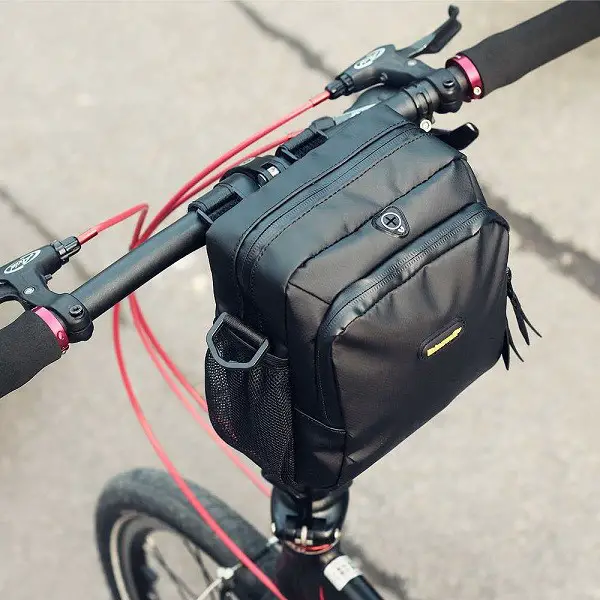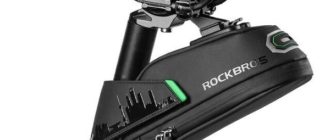The route is chosen, the bike is prepared, and the list of necessary things is made. Now cyclists must think of how to pack and load the stuff on the two-wheeler. Backpacks, bulky bicycle pants are a familiar, but bad option, because it overloads the rear wheel. European waterproof mega-bags look nice, but make the bike impossible to carry in case of emergencies.
The advent of the trendy Bikepacking—what-it-is–pros-and-cons-of-bikepacking-bags trend helps solve the problem. Travelers got an opportunity to get rid of heavy luggage bags, to free the loaded bike from unnecessary cargo. According to Google Trends statistics, by the end of this year, the demand for Bikepacking—what-it-is–pros-and-cons-of-bikepacking-bags has increased tenfold. The alternative solution is widespread in the West and in our country.
What is Bikepacking
American Bikepacking—what-it-is–pros-and-cons-of-bikepacking-bags is a new concept of transporting equipment on the bike. The idea consists of two components:
- Give the bike a lightweight ride and lighten the construction;
- to distribute the load evenly along the entire bike.
Cyclists traditionally place things on bike racks. Bikepacking allows the cyclist’s equipment to be spread out into compact accessories and secured under the saddle, frame, handlebar, and fork. The total cargo volume, which is placed on the bike, is inferior to the typical backpacks-pants, side bike bags. But forces a good analysis of the route and abandon the excess stuff.
Americans associate Bikepacking—what-it-is–pros-and-cons-of-bikepacking-bags with autonomous bicycle races of thousands of kilometers. The routes are laid out away from busy tracks, exclude car escorts and the presence of support teams. The athlete must be a virtuoso cyclist to get through difficult sections quickly and then overnight with bivouac gear. A minimum of equipment along the bike allows for responsive bike control and maximum speed.
History of Bikepacking.
“New is always well forgotten old.” The well-known law has found confirmation in the modern ideas of making bicycle accessories. Manufacturers turned to the experience of past generations. The first Australian settlers, when exploring the continent, carried trunks mounted under the saddle, on the handlebars and frame. In the nineteenth century, American soldiers strapped twists of raincoats and blankets to their bicycles. Bags with a two-day supply of water and provisions were secured inside the frames. Successful ideas were adapted to reality by adding modern solutions. The result was Bikepacking—what-it-is–pros-and-cons-of-bikepacking-bags, which became a sought-after trend among bicycle travelers.
The new-fangled movement was not limited to previous skills. The concept of Bikepacking—what-it-is–pros-and-cons-of-bikepacking-bags went further. The idea emerged to create a lightweight vehicle for bicycle touring, which is freed from unnecessary stress through a well-thought-out route and rational placement of the biker’s equipment. Bikepacking came to be called the hiking philosophy of riders. Renowned companies have released new models of bicycles, accessories, hiking equipment. For example, tents for bikepackers, special bags with the ability to attach additional equipment, boats for combined bike routes.
Bags for Bikepacking
An alternative to backpacks is characterized by functionality, durability, easy transportation on the bike. Outdoor designers and designers have freed Bikepacking—what-it-is–pros-and-cons-of-bikepacking-bags bags from unnecessary seams, trim, finishing stitching. The gear is dominated by functional minimalism and technology.
For example, under the brand ortlieb bike bags without seams are produced with carbon inserts. For trivia and snacks specially made feedbags and bags that are attached to the bike fork. Stores sell airtight bags of different volumes, which allows you to protect all the equipment and documents from moisture and bad weather. Bags are sewn from army fabric with a special structure of thread, polyurethane coating. Budget alternative is represented by baulks made of ordinary dense fabrics with water-repellent impregnation. Classic Bikepacking—what-it-is–pros-and-cons-of-bikepacking-bags set includes three high-quality bags of small volume.
Seatbelt
Professionals advise to take into account the purpose of the trip when choosing bicycle equipment. For example, you’ll need a 10-liter saddlebag for long journeys. The extended, waterproof bag, which is attached to the prong, is securely secured by straps to the saddle frame. To prevent rocking, heavy items are placed at the bottom of the bag when packing.
The designers of Backloader saddlebags have added a 7-liter console and hermetic bag that replicates the conical shape of the bag. The hermetic bag is equipped with an air vent. The device compactly compresses a sleeping bag, clothing and other items. The compress-hermetic bag itself is easy to pull out without removing it from the bike. An indispensable element of a Bikepacking—what-it-is–pros-and-cons-of-bikepacking-bags kit can be purchased at any online store. The cost of the order – from 2000 p. Manufacturers ortlieb produce bags made by high-frequency welding. Even the seams can withstand a water column pressure of one hundred thousand mm.
Outdoor
The waterproof cylindrical bag is the perfect solution for carrying bulky items of equipment (sleeping bag, tent) on your bike. When side loading your belongings, each side closes with a twist and is secured with a carabiner clasp. Outdoor bags with vertical placement of things are zipped, used to carry auxiliary small things. Of the two types, the horizontal console is more popular.
Chinese woho bags additionally have a plastic panel inserted that gives stability and keeps the center section from bulging out. Usually a small load (such as a jacket) is placed between the bag and the panel. For long-distance cycling, a cantilever handlebar pouch with a plastic base is available, allowing cyclists to use their smartphone in all weathers.
In-frame
The most roomy type of gear carrier is a must-have accessory for the cycling traveler. A bag with heavy items is installed in the inner space of the frame. The pull-out double bottom increases the volume of the bag. Offset to the bottom center of gravity allows you to handle the bike with confidence at high speed, do not be afraid of entering the steep turns. Pick the right size for the geometry of the frame is difficult. Experienced cyclists usually sew frame bags to order or buy cylindrical bags that fit under the top tube of the frame.
Pros and cons of Bikepacking
Many travelers have refused to use bike backpacks on long hikes. The weight behind the back shifts the center of gravity, impairs handling at speed, and increases the risk of falls when entering corners. Neck and shoulder fatigue, a sweaty back, and knocks on the coccyx under the weight of a shoulder bag cause many problems for the cyclist. Bikepacking offers a balanced load over the entire length of the vehicle. The new concept of carrying gear on your bike has advantages and disadvantages to consider when choosing a bag.
| Pros of Bikepacking | Cons of Bikepacking |
|---|---|
| The bike’s behavior does not change on the road. | Heavy load slows acceleration, makes it difficult to perform high-speed maneuvers |
| Reduces aerodynamic drag. | Outfitting adds to overall bike weight |
| Allows you to ride freely in rough terrain, overgrown trails | Few spaces, only necessary things fit |
| Sealed bags quickly attach to bike | Difficult packing of gear |
| Weight evenly distributed on the bike doesn’t lift the front wheel | Bike saddlebags are not always stable and can rock the bike |
| You have more comfort and enjoyment on your bicycle | Seatbags sometimes get wet |
| Bikepacking bags fit any route | In-frame bag inflates in side winds, creates a sail effect |
| Versatility of biking accessories that are convenient to use both on hikes and in the city | Limitations in volume High cost |
Features the classic Bikepacking—what-it-is–pros-and-cons-of-bikepacking-bags bag set:
- Outboard allows you to transfer a lot of weight. But impair bike handling on bad roads.
- A subframe bike bag is a versatile way to carry small items. Minus – restrictions on use on bikes of the “two-suspension” type.
- Seatbags are called relatives of the bicycle glove box. The main advantage is that they do not increase aerodynamic drag. The disadvantage – small size, difficult accessibility when moving.
- Compact frame bags do not interfere with the maneuverability of the bike, but the size of the bags limits the amount of useful cargo.
Compatibility with bicycles
The value of the new concept is that the way gear is carried is applicable to any type of bicycle. The demand for Bikepacking—what-it-is–pros-and-cons-of-bikepacking-bags has forced manufacturers to produce special models of bikes. For two-pods, designers developed a frame accessory that spared owners from having to sew a custom bag.
When it’s best not to use Bikepacking
Bikepacking has limitations that cause it not to be used on the following Bikepacking—what-it-is–pros-and-cons-of-bikepacking-bags trips:
- Autonomous trips away from populated areas. Equipment and food supplies that will be needed on an off-road route cannot be placed in Bikepacking—what-it-is–pros-and-cons-of-bikepacking-bags bags.
- Around-the-world bike trips are designed to cover thousands of kilometers. Not all countries have a well-developed infrastructure that allows you to buy groceries or send things by mail. On such trips use the classic sets of bike bags, backpack-pants, etc.
- Comfortable rest in your own campsite. For a multi-day trip on the bikes will need bulky equipment, special gadgets, video and photo equipment.
- Long journeys in winter are accompanied by a large amount of warm clothes, fuel, an increased set of products. Putting all the gear in Bikepacking—what-it-is–pros-and-cons-of-bikepacking-bags bags is a difficult task for the cyclist.
Can Bikepacking bags and bike bags be combined
Comfortable next-generation bike accessories are well compatible with classic solutions. Riders combine them independently and distribute them along the entire length of the bike. For example, side bike bags are attached to the front rack, and some things are placed in the saddlebag. Cyclists often put compact and lighter bags designed for the front rack at the back.
Conclusion
Bikepacking has become a “trigger” for experimentation in bicycle touring. A set of comfortable, functional bags remains a sought-after alternative to backpacks and bulky luggage racks.








